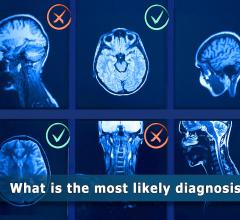
Greg Freiherr has reported on developments in radiology since 1983. He runs the consulting service, The Freiherr Group.
BLOG: What Makes Patient Portals Important

Photo courtesy of Pixabay
Patient portals can be a one-stop shop for patient access to health records and physicians. They can directly engage patients; provide access to their images; even help providers meet meaningful use requirements.
David-Paul Cavazos said the patient portal at Republic County Hospital in Iola, Kan., makes it easy for patients to access their medical images, engaging patients in their care while images are transferred to other facilities — a process completed using the Ambra Health platform. Cavazos, who served as a radiology tech before becoming CEO of Republic County Hospital, said Ambra provides “a great modern-day solution,” one that gives Republic County Hospital the capabilities needed to thrive.
He explained that patients of the 25-bed hospital often call on specialists based at larger medical facilities — an orthopedist or cardiologist, for example — more than 200 miles away in Lincoln, Neb.
“In the old days patients had to take hard copy film or CDs with them. Any number of things could happen,” Cavazos said. Patients could accidentally leave their images behind, when they stopped for lunch, he said. Or the CDs could in some other way be lost. “Now the images are sent securely through email.”
How Portals Can Help
Using patient portals in combination with secure networks, such as the one from Ambra, makes sense, said Morris Panner, CEO of Ambra Health. “It really makes patients the masters of their data,” he said. “They can easily share their health data with other family members and other institutions. Whatever they want to do with it.”
But, because this pairing is not always done, the value of patient portals is constrained. “You can see your information but you really can’t share it,” Panner said.
The potential of portals is well documented. In their published paper on the topic, for example, researchers at the University of Wisconsin (UW) showed that most inpatients and providers were at least interested in using inpatient portals that connected them to their health care data. In an article published in the June 2018 issue of the Journal of Hospital Medicine, the UW authors reviewed published literature regarding these portals, reporting that patients found the portals easy and useful. In an interview with Imaging Technology News, however, lead author Michelle Kelly, M.D., noted that the usefulness of the portals “depends on the patient’s situation.”
Adult in-patients throughout UW Health now have access to portals, according to Kelly, and about 65 percent access their data through the portal. “We can’t be there at their bedside 24/7, so patient portals provide a tool for us to engage them and help them engage in their health care when we are not there,” she said.
Republic County Hospital routinely provides patients access to their data through a portal that interfaces with the hospital’s electronic medical records system. The small rural hospital uses those data and images to work with larger medical centers in cities that are several hours’ drive away.
Delivering Care
A patient complaining of chest pain, for example, may have a nuclear medicine stress test at Republic County Hospital. Not only can the patient view their images but, as part of his or her care, encrypted versions may be sent using the Ambra Health platform to a cardiologist at Bryan Medical Center in Lincoln, Neb. There the images are decrypted and archived. An appointment between a cardiologist at the Bryan Medical Center and the patient is scheduled. And the images are reviewed by the cardiologist prior to the patient’s visit.
“Our patients trust us that we are doing the right things by them,” Cavazos said.
Amplifying care by working in partnership with larger facilities is how Republic County Hospital continues to meet patient needs. Keeping the care process simple, yet engaging the patient, is critically important, he said.
“Ease-of-use — and ease-of-access — is the name of the game.”
Greg Freiherr is a contributing editor to Imaging Technology News. Over the past three decades, he has served as business and technology editor for publications in medical imaging, as well as consulted for vendors, professional organizations, academia, and financial institutions.
Editor’s Note: This is the final blog in this series on Sharing Patient Images. You can read the first blog in this series, BLOG: Why You Should Not Use CDs To Transfer Patient Images, here. You can read the second blog in this series, BLOG: Why Interoperability Is Essential When Transferring Patient Images, here.
Related content:
BLOG: Why You Should Not Use CDs To Transfer Patient Images
Data Driven Workflows on the Rise as the User Changes


 July 26, 2024
July 26, 2024 








